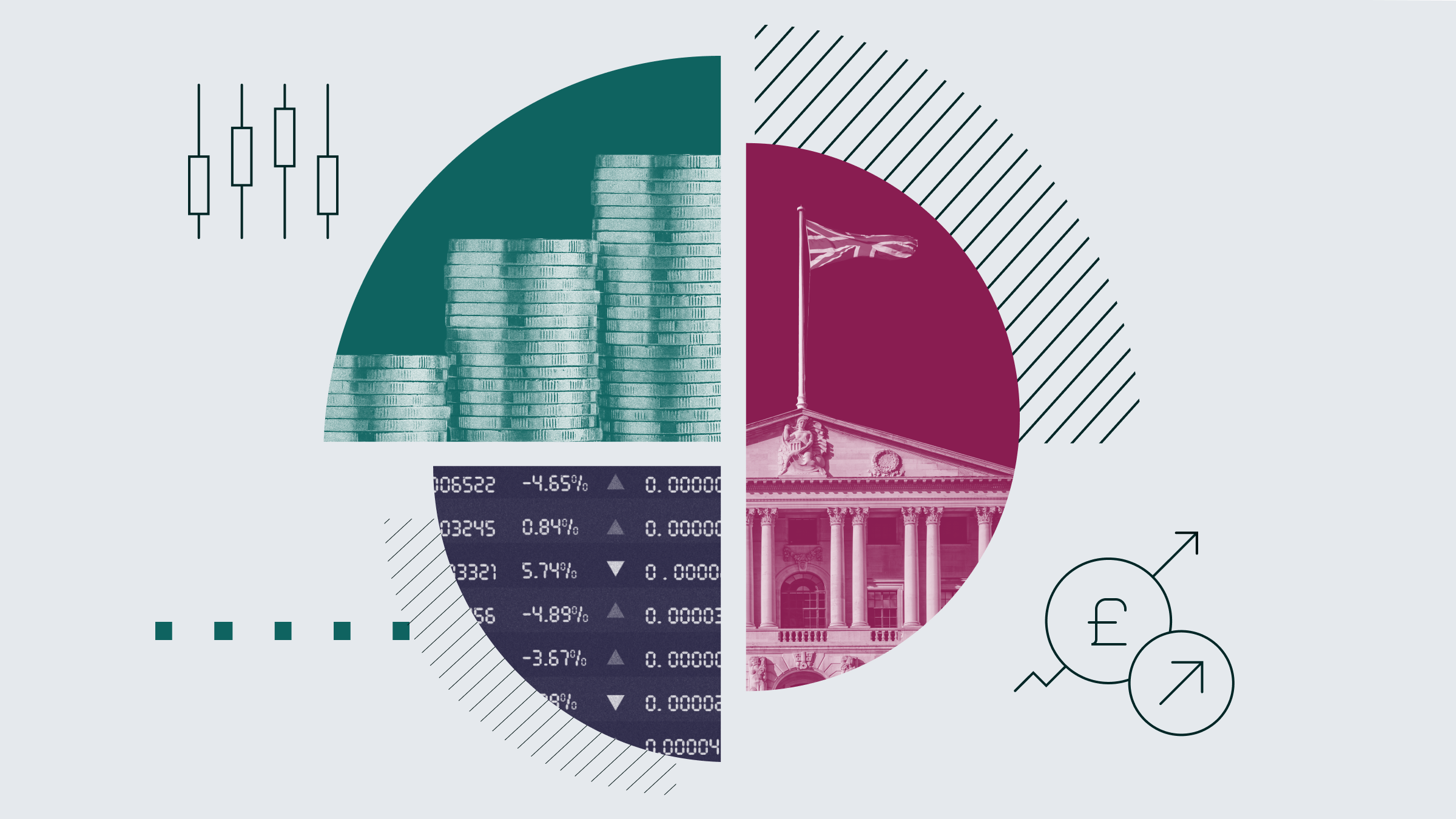
Financial markets are now convinced the Bank of England will cut rates in May after US President Donald Trump’s tariffs sent shockwaves through global markets and substantially increased the risk of a global recession.
After the market carnage of “Liberation Day”, economists and financial analysts widely fear that Donald Trump’s policies are inflationary, which would lean in favor of keeping interest rates steady or at least slowing the planned pace of rate cuts. But the changes to trade levies are also expected to be recessionary, which would argue in favor of cutting rates more quickly.
While central bank policymakers are attuned to the risks of prices rising again, they have to be mindful of local factors too: in the UK, low GDP is a problem the government is grappling with, while inflation is expected to rise again towards the end of the year even without the tariff impacts. The latest tariff trauma has reignited the discussion about stagflation in the UK.
Will the Bank of England Cut Rates in May?
When it meets next month, then, the Monetary Policy Committee’s decision will rest on two conflicting priorities: combating the potentially inflationary effects of tariffs with a rate hold and stimulating economic growth with a rate cut. It can only pick one.
“US trade policy developments have complicated the picture for the Bank of England,” says Morningstar international economist Grant Slade.
“The BoE needs to balance its price stability objectives—with the BoE expecting inflation to accelerate in coming quarters—against the need to support the UK economy from the significant shock imposed by Trump’s ‘reciprocal’ tariffs.
“Notwithstanding, greater monetary policy support is likely on the cards with the marked increase in uncertainty—evidenced by the sharp moves in equity markets and rising credit spreads in recent days—likely to weigh on business investment and consumption activity, near-term."
And it would appear markets agree.
According to interest rate swaps data, there is a 103.1% chance of that happening. Prior to the announcement of tariffs, markets had assigned a 76.8% change of a cut in May, which is when the monetary policy report is also published. This would take interest rates down to 4.25%, following a cut in February.
This swaps data from late March then indicated there will be no more rate cuts, with the August meeting close to being a 50-50 then.
Now, the June meeting is a 50-50 in terms of a cut, and the odds of an August rate reduction are now at 76.1%. Further out, November’s meeting still has odds below 50% in favor of a cut.
Market expectations aren’t the whole picture and can change dramatically, but they do give a snapshot of financial sentiment with clarity. So far the Bank of England has been cautious in its approach, cutting less than the European Central Bank.
Markets seem to believe the time for caution is over.
Has the Interest Rate Cycle Been Changed?
“It’s not unthinkable that we will actually see interest rates come down more rapidly than expected,” said Evelyn Partners managing director Jason Hollands.
“It is quite possible that they will regard price spikes related to the implementation of tariffs as a one-off shock and focus more on the risk of economic stagnation.
“The Bank of England will face a dilemma. On the one hand, tariffs are going to lift the prices of some goods and its core remit is to keep a lid on inflation, as close to 2% as possible, which would point to rates staying higher for longer than previously expected.
“On the other, the Bank has taken a wider view of the economy in the last decade or so, taking growth and jobs into account in its monetary policy, particularly when dangerous shocks emerge. As during the pandemic, it will want to support the economy from sinking into recession.”
Will the Bank of England Continue to Cut Rates?
The Bank of England has so far displayed caution in its fight against inflationary trends. After inflation finally hit the Bank’s 2% target in May 2024, it continued to hold rates until August, when it eventually cut. Two further cuts followed in November 2024 and February 2025. In the meantime, inflation rose once more.
Markets were wrongfooted by this chain of events. Having forecast a flurry of rate cuts throughout 2024, traders and investors entered 2025 with mixed expectations. Opinion was divided: between those who believed the Bank of England would cut continually throughout this year, and those who didn’t want to make the same mistake twice.
Monetary policy is always subject to a fair degree of uncertainty, as economic data is retrospective and events are unpredictable. That unpredictability has only increased.
In the first quarter of this year, the pace of geopolitical change has been rapid. The market reaction to Trump’s tariff programme has been profoundly negative, defense stocks have soared and then fallen on political events, and the future of Ukraine has hung in the balance.
Before the tariff-related global selloff, US markets were already faring worse than European and UK markets so far in 2025. After a strong start to the year, UK stocks have gone into reverse in April. Year to date the Morningstar UK Index is down 1% in pounds, whereas the Morningstar US Market Index is down nearly 14%. The UK stock market is in correction territory, but has yet to enter a bear market.
What Will UK Stocks do if the Bank of England Cuts Rates?
Given the negative sentiment that has dominated stock markets in the last two weeks, a rate cut by the Bank of England could be met with a positive reaction from UK stocks. Because interest rate swaps data shows a full consensus on the likelihood of a cut, a rate hold would be met with a negative reaction.
However, there are plenty of other factors at play. Markets move up and down on interest rate news, but they are also sensitive to other events. Everything Donald Trump says appears to be market sensitive, so markets could well fall still if investors think bad news elsewhere outweighs good news from Threadneedle Street.
What Will UK Gilts Do if the Bank of England Cuts Rates?
Yields on government bonds across the world have fallen as markets price in the rising likelihood of recession and further interest rate cuts from central banks.
In the last month, the yields on UK government bonds have fallen, with 2- and 5-year gilt yields falling 34 and 30 percentage points, respectively. Both now yield below 4%, with the 2-year yielding 3.84% and the 5-year yielding 3.96%.
The impact on the longer end of the yield curve has been more muted as financial markets anticipate more impact on short-term interest rates. Before the turmoil, the 30-year gilt was yielding 5.30% and the 10-year gilt was yielding 4.77%; now these yields are 5.16% and 4.45%.
Yields spiked since the start of the year but the latest bond rally, with investors buying safe-haven assets, has dragged yields down.
This continues a trend of volatility seen throughout 2025 so far. In the first quarter of the year, concerns over the UK government’s fiscal position—and the threat of trade wars by the Trump administration—sent long-term UK gilt yields rising.
When the tariffs hit in earnest, bond traders reassessed the price of holding this type of debt over both the short and long-term. As the situation unfolds, fixed income investors can expect more volatility. If the Bank of England holds rates, it is likely UK gilt yields will rise. If the Bank cuts rates as markets are expecting, they will likely fall.
An emergency rate cut, though not expected, is likely to knock down yields on short-term UK bonds.
The author or authors do not own shares in any securities mentioned in this article. Find out about Morningstar's editorial policies.























